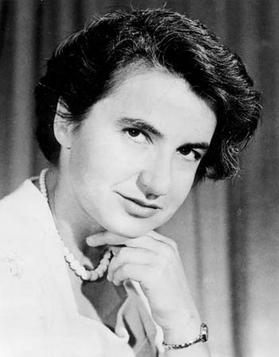By Maya Duggan
Throughout history, bright minds behind some of the most revolutionary discoveries of the 20th century have been forgotten and ignored. Their contributions have faded into obscurity, their names unknown.
The reason for this disservice?
They were women.
In the past, the shadow of sexism loomed over everything, belittling women, and their achievements. One of the instances in which this discrimination became glaringly obvious was for women working in traditionally male dominated areas such as STEM. Whilst today, women in STEM are encouraged and celebrated, in the past women’s legitimacy as scientists and engineers was constantly questioned and undermined. The phenomenon whereby women are discredited and overshadowed by their male counterparts is known as “the Matilda Effect,” after suffragette and abolitionist Matilda Gage, who first described the bias in her essay “Woman as Inventor”.
One of the most famous examples of the Matilda Effect was in 1962, when James Watson and Francis Crick won a Nobel prize for their discovery of the double helix. Their discovery is widely recognised as having given rise to modern biology and has helped us to understand how genes can control the chemical processes in cells. However, one very important person failed to gain recognition for her part in the discovery: Rosalind Franklin.
Franklin was a British chemist and X-Ray crystallographer. She had worked alongside a man called Maurice Wilkins at King’s College, showing him X-Ray photos she had taken of a DNA molecule. These photos included one, ‘photo 51,’ which clearly showed DNA to have a double helix structure. However, controversy between Franklin and Wilkins led Wilkins to start working at ‘the Cavendish’ laboratory in Cambridge, where Watson and Crick were working on a model of DNA structure.
Without Franklin’s pictures, Watson and Crick would not have had the realisation that the DNA was a double stranded molecule, and yet, they gave her scant acknowledgement. It was only after her tragic death at age 37 that Crick admitted her work had been crucial to their discovery.
Examples like these are scattered throughout the history of scientific discoveries and inventions, with women’s ideas being stolen by their husbands, co-workers, and sons. Time and time again, women were sidelined whilst men were hailed as geniuses and heroes.
When you look at the statistics, the revelations are shocking. In the 121 years for which the Nobel Prizes have been awarded, 873 have been awarded to men compared to only 57 to women. Even today, women make up only 28% of the workforce in STEM, with gender bias particularly present in the highest-paid jobs of the future, such as computer science and engineering. According to a study conducted by AAUW, girls and boys fill classes of mathematics and science in equal numbers, yet fewer girls pursue these subjects as majors when going to university. By graduation, men were said to outnumber women in nearly every science and engineering field and in some subjects such as engineering and computer science, only 20% of bachelor’s degrees are earnt by women.
RMIT professor of engineering and member of the board of directors of women in STEMM Australia, Madhu Bhaskaran, says she noticed how different working in STEM could be for women when she became pregnant with her son.
“They didn’t really know what to do,” she says. “There were so few women in the industry that before me I don’t think anyone had taken maternity leave for more than a decade.”
As an Indian woman completing her PhD in electronic materials engineering, she said she started to feel like a minority when she began to advance in her career.
“As you move further up the chain and start thinking about what’s next, you look around and realise no one else looks like you.”
To help other women struggling with the same dilemmas, Ms Bhaskaran started women’s support group at RMIT in 2013 for women in STEM, the “Women’s Social Network.” Today, it’s become a school-wide group for women to connect with one another and share similar experiences.
There may be more women in STEM than ever before, but we still have a long way to go. It’s important we as a society continue to encourage young girls to pursue careers in STEM.
We can bust stereotypes and expose girls to the full range of STEM careers early on.
We can create a more balanced approach to STEM and find role models in the industry girls can relate to.
And together, we can make sure there are no more Matildas.

